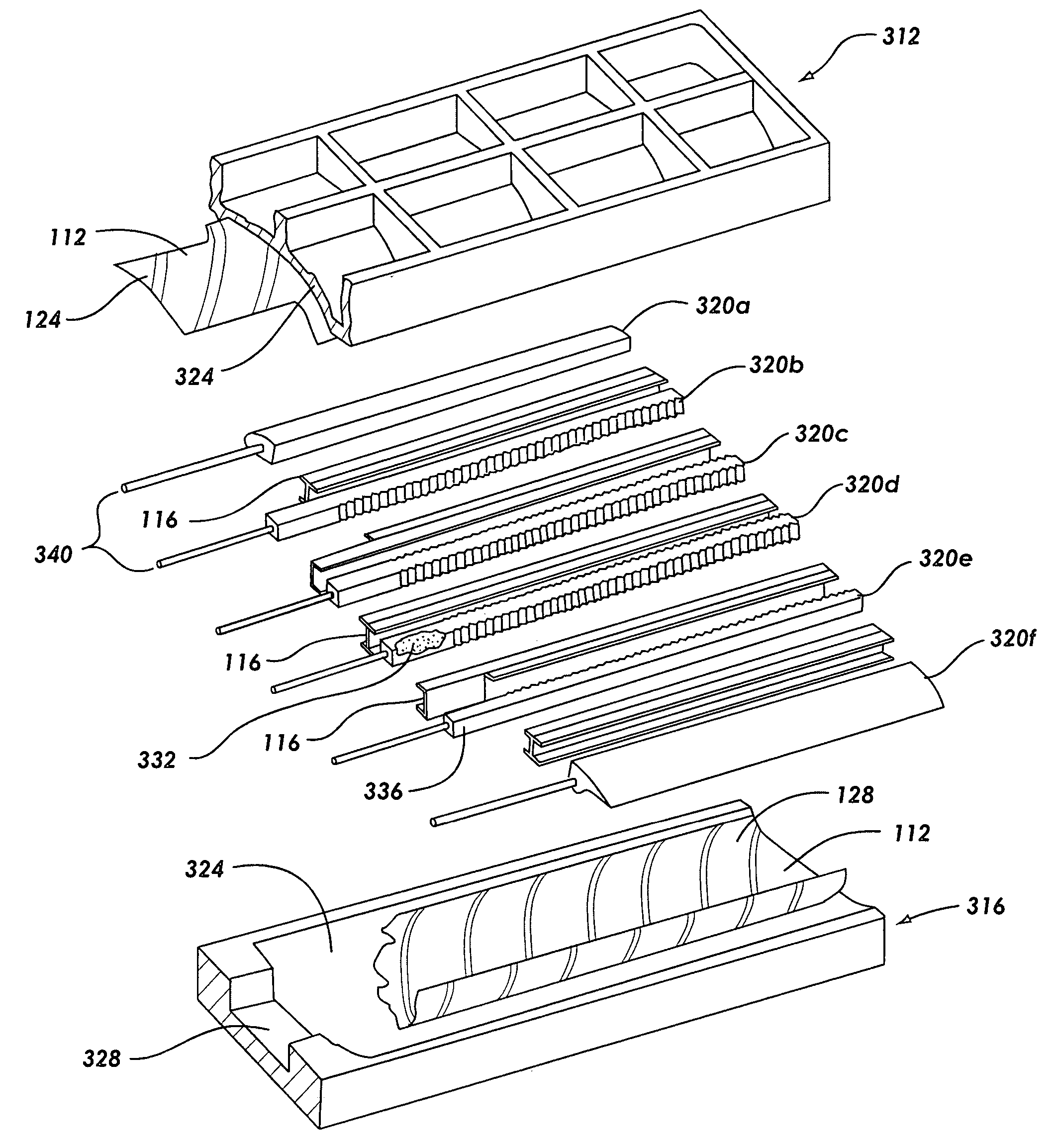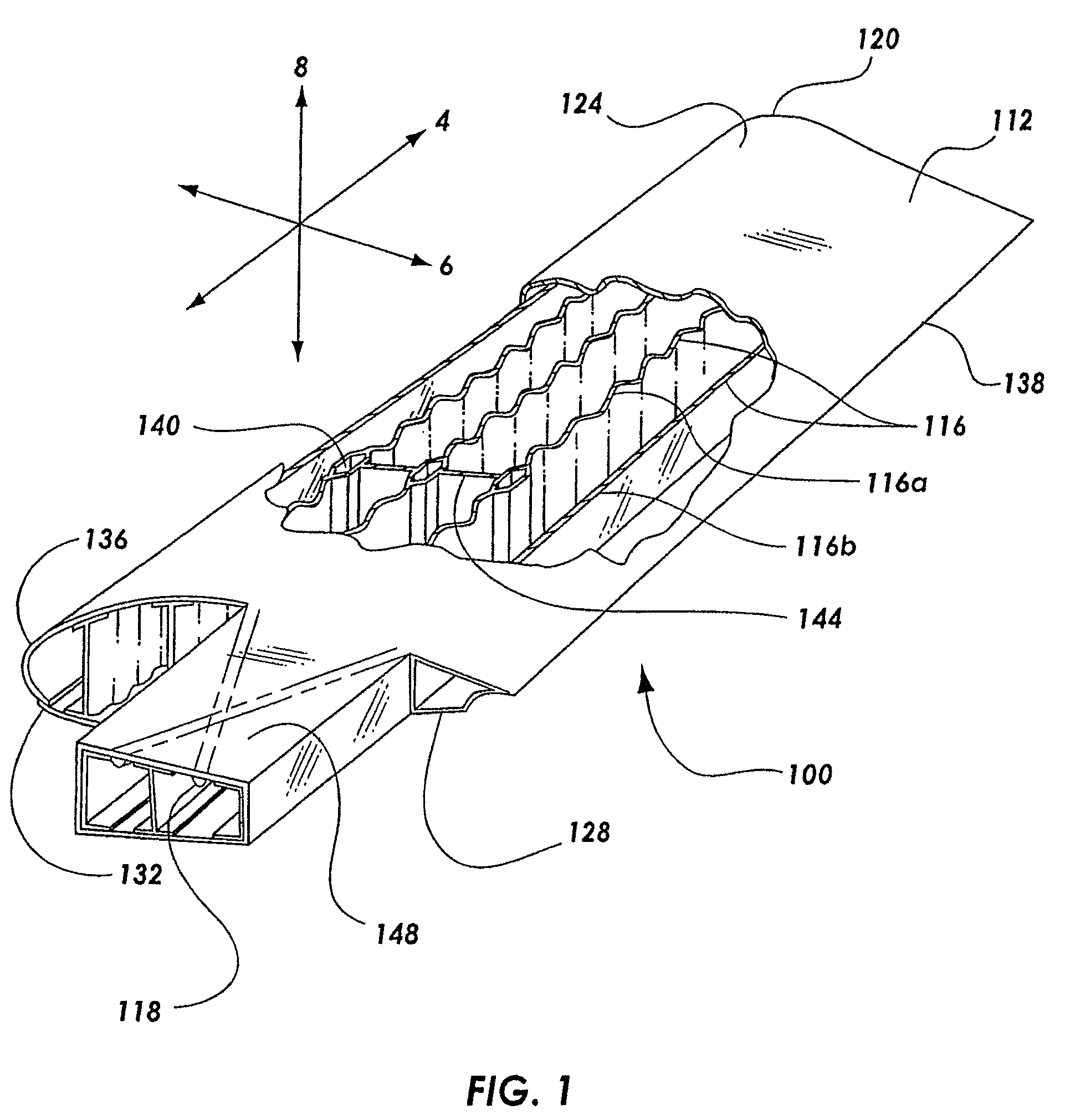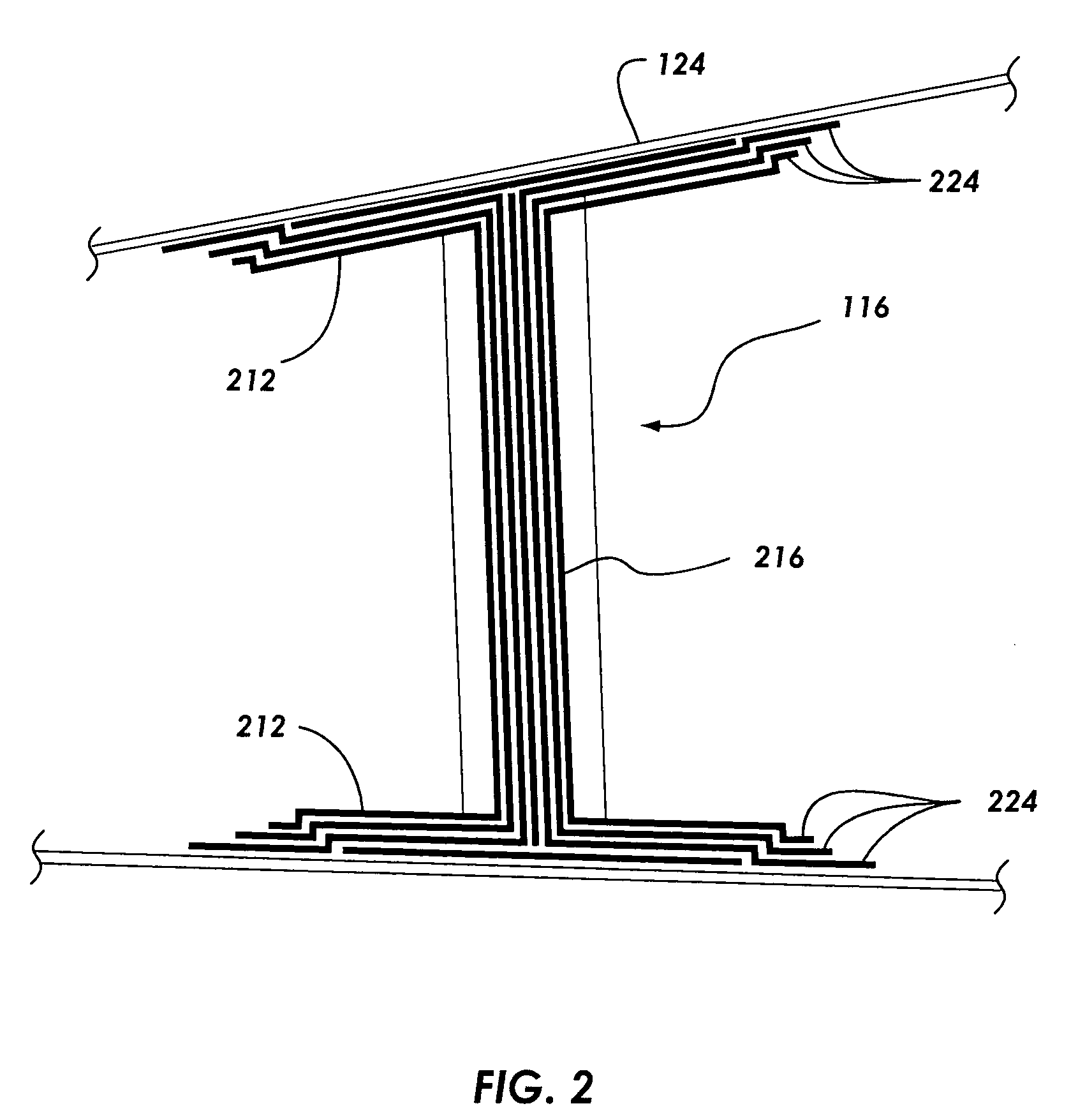Process for forming a single piece co-cure composite wing
a composite wing and composite technology, applied in the field of single-piece composite wing structure, can solve the problems of increasing the manufacturing cost of the wing, affecting posing difficult design problems in the design of the wing, so as to achieve the effect of easy removal
- Summary
- Abstract
- Description
- Claims
- Application Information
AI Technical Summary
Benefits of technology
Problems solved by technology
Method used
Image
Examples
Embodiment Construction
[0027]The preferred embodiments of the invention are now described with reference to FIGS. 1-4, where like reference numbers indicate identical or functionally similar elements. The members of the present invention, as generally described and illustrated in the figures, may be implemented in a wide variety of configurations. Thus, the following more detailed description of the embodiments of the system and method of the present invention, as represented in the Figures, is not intended to limit the scope of the invention as claimed, but is merely representative of presently preferred embodiments of the invention.
[0028]The present invention provides for a single piece co-cured composite wing structure. Referring to FIG. 1, a single piece co-cured wing 100 having a composite flying surface 112 and a plurality of composite structural members is illustrated. The composite structural members may have various embodiments for maintaining the general shape of the flying surface 112 and allow...
PUM
| Property | Measurement | Unit |
|---|---|---|
| pressure | aaaaa | aaaaa |
| pressure | aaaaa | aaaaa |
| pressures | aaaaa | aaaaa |
Abstract
Description
Claims
Application Information
 Login to View More
Login to View More - R&D
- Intellectual Property
- Life Sciences
- Materials
- Tech Scout
- Unparalleled Data Quality
- Higher Quality Content
- 60% Fewer Hallucinations
Browse by: Latest US Patents, China's latest patents, Technical Efficacy Thesaurus, Application Domain, Technology Topic, Popular Technical Reports.
© 2025 PatSnap. All rights reserved.Legal|Privacy policy|Modern Slavery Act Transparency Statement|Sitemap|About US| Contact US: help@patsnap.com



